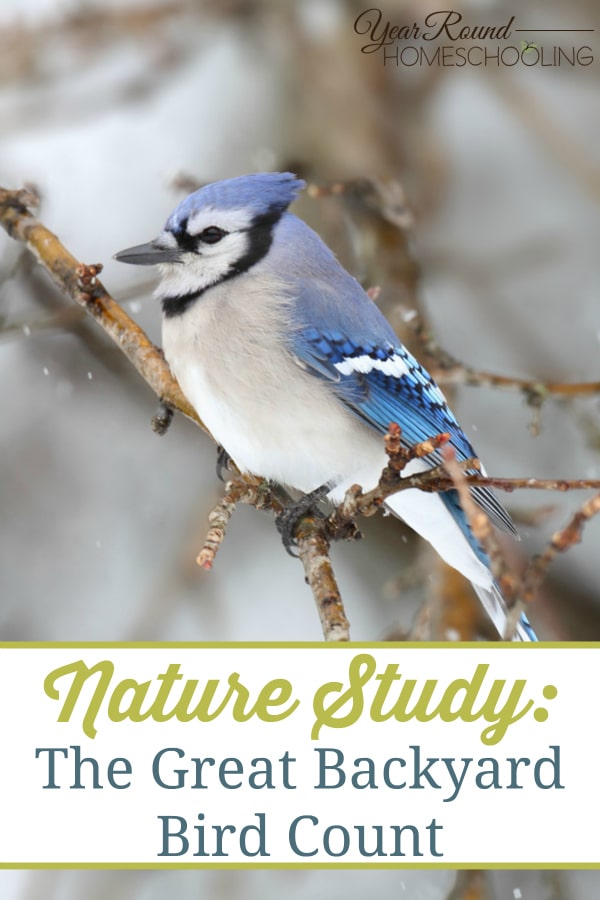I have a confession: I don’t like to do nature study very much when it’s cold. I’ve been trying to think of things you could do to study nature inside, preferably with a nice afghan and some hot chocolate along for the ride. Yes, I am a BIG wimp. I’m from Michigan. I should be able to handle cold. However, after all these years in the South, my tolerance for cold weather has all but disappeared. Unfortunately, my tolerance for hot, humid summers has not increased at the same rate. This has nothing to do with nature study, other than I am loath to tell you to go outside and observe things when it’s this cold.
Enter: THE GREAT BACKYARD BIRD COUNT! This is such a great program. All you do is count the birds you see at your feeders or in your yard, for 15 minutes per day, for one or more days of the bird count. It lasts for four days each year. Once you’ve counted, you submit your data through the GBBC website. That’s it! You can register on their website here, and you will get your login information so you can enter your data. It’s a fun way to participate in some citizen science, and if you’re new to bird watching, you might be surprised by what you find!

Nature Study: The Great Backyard Bird Count
If you don’t have a bird feeder, you can make some quite inexpensively. We love to make pine cone bird feeders, and the birds LOVE them. When we put them out, the birds prefer to eat from them than from the other feeders we have. You can also make bird feeders from milk cartons (the paper-ish kind) or milk jugs (the gallon plastic kind) or egg cartons – though I think the egg cartons, unless you have styrofoam ones, would only last until the first rain. And, if you did use styrofoam, you’d want to make holes in the bottom of each of the egg cups so water would drain. You can even use an empty peanut butter jar (or other, alternative nut or seed butter jar). If you simply do not have a place to put a feeder, you can sprinkle seed on the ground. Birds will still find you!
(the paper-ish kind) or milk jugs (the gallon plastic kind) or egg cartons – though I think the egg cartons, unless you have styrofoam ones, would only last until the first rain. And, if you did use styrofoam, you’d want to make holes in the bottom of each of the egg cups so water would drain. You can even use an empty peanut butter jar (or other, alternative nut or seed butter jar). If you simply do not have a place to put a feeder, you can sprinkle seed on the ground. Birds will still find you!
I’ve posted before about bird identification resources, both online and free, as well as books. I am a big fan of having a bird guide in my hand, myself; the online thing is less fun, for me. For beginning birders, I really like the National Audubon Society’s bird identification guide. It groups birds into simple categories like “perching birds” and “tree-clinging birds,” which makes it easier to find what you’re looking for than actual names when you’re just starting out. I also like this Beginner’s Guide from Stokes – it groups birds by color. There are many, many little, brown birds. It helps to see pictures of them so you can figure out exactly which little brown bird is in front of you at the moment.
Have you ever participated in The Great Backyard Bird Count before? If so, how many birds did you count?
